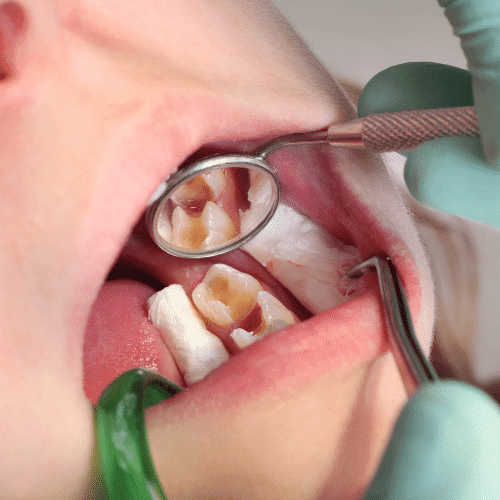The two most common periods in life to experience dental emergencies are during toddlerhood and adolescence due to environmental exploration and sports-related injuries. However, it is also common for adults to experience a dental emergency due to trauma, decay, or infection.
Common Dental Emergencies
1. Toothache
Tooth pain can indicate a wide variety of potential dental problems. Its cause should be identified and treated as soon as possible. Two common causes of toothaches are pulp infections and having something stuck between your teeth. When tooth pain comes on suddenly, is progressively getting worse, or is intense, it is vitally important to see a dentist as quickly as you can.
2. Chips or Cracks
Chips and cracks can form in the teeth from biting down on hard objects, using teeth to perform activities other than biting or chewing, or through psychical trauma to the teeth. People who grind or clench their teeth are also more susceptible than others to chipping or cracking their teeth. If you have a tooth that has become chipped or cracked, visit a dentist immediately. Any tooth fragments should be rinsed, preserved in a glass of milk or water, and brought to your dentist to determine whether or not they can reattach the broken portion of the tooth.
3. Loose or Knocked-Out Teeth
Any traumatic impact that causes teeth to become loose or fall out requires urgent dental care. If a tooth becomes loose, you should attempt to keep the tooth in its socket by gently biting down to hold the tooth in its correct place. If a tooth gets knocked out of your mouth, you should attempt to locate the missing tooth so that the dentist can try to save it. If you find the missing tooth, you should only handle it by the crown, not the roots. You then must clean the tooth by gently rinsing it. You can preserve the tooth by doing one of two things: you can place it back in the socket and bite down as you would for a loose tooth, or you can store it in a glass of milk or water like you would for fragments of a chipped tooth.
4. Missing or Loose Dental Restoration Appliance
Both permanent and temporary restorations, such as crowns or implants, can become loose or fall out. These problems are far more common with temporary restoration work. Regardless of the type of restoration, they both require emergency dental care. For a permanent restoration appliance, you will need to bring the restoration appliance with you to your dental appointment. With a temporary restoration appliance, you may be able to use Vaseline, Chapstick, or denture adhesive to keep the restoration appliance in place until you can see your dentist.
5. Soft Tissue Injury
The soft tissues of the mouth include the lips, gums, inner portion of the cheeks, and tongue. When one of these structures is injured, you will want to call your dentist for instructions on where to go to have the injury treated. Some injuries may require an emergency dental visit, while others may require a trip to the emergency room. Soft tissue injuries such as lacerations, punctures, and tears should be rinsed thoroughly with warm water and have pressure applied to them to stop the bleeding.

Cavities

Chips and Cracks Teeth

Loose Teeth
The Basics of Preventing a Dental Emergency
Frequently Asked Questions
Solicite Su Cita
No dude en ponerse en contacto con nuestro amable personal de recepción con cualquier consulta dental o para reservar una cita.

